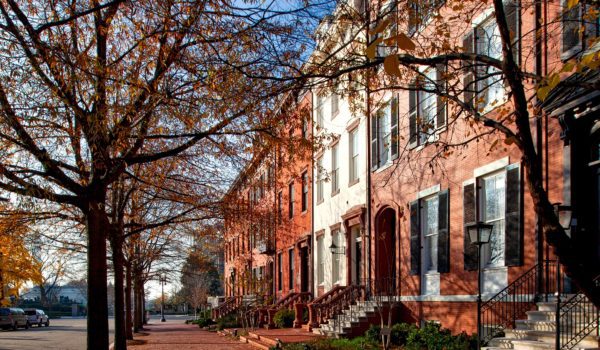A proposed expansion of Kentucky’s Historic Preservation Tax Credit that we summarized in a prior blog post is now a reality. On April 13, The Kentucky House and Senate overrode Governor Andy Beshear’s veto of HB 8, which, among other comprehensive changes to Kentucky’s tax system, amends Kentucky Revised Statute (KRS) 171.397 and increases the maximum credit a taxpayer can claim for both owner-occupied residential properties and commercial properties. The Historic Preservation Tax Credit provision was originally introduced in the legislature as HB 659 and later folded into the larger tax bill, HB 8, through a Senate Committee Substitution. Because the Governor originally vetoed the bill, the legislature delivered the enrolled bill to the Secretary of State for signature.
Expansion of Historic Preservation Tax Credit
HB 8 doubles the maximum permissible tax credit for owner-occupied residential properties from $60,000 to $120,000. The more significant change is to the maximum permissible tax credit for properties that are not owner-occupied residential, expanding the maximum permissible tax credit for such eligible historic properties 25 times the previous maximum of $400,000 to $10 million.
Increasing the maximum state historic preservation tax credit eligibility for individual taxpayers increases the ability of developers to undertake large historic preservation projects because the increased project cap permits developers greater access to tax credits to mitigate rehabilitation costs.
This bill follows the General Assembly’s expansion of the overall annual state cap from $5 million to $100 million in 2020. That cap expansion placed Kentucky on par with surrounding states whose programs often offer tens of millions of dollars in credits annually, and in some cases, are even uncapped.
Corrective Action to Permit Transferability of Historic Preservation Tax Credits
In addition to increasing the maximum credits that taxpayers can claim for eligible historic properties, HB 8 makes an important corrective change to ensure the continued transferability of the tax credits. Transferability of the credits is important because developers often elect to transfer the credits to financial institutions with tax liabilities equal to or in excess of the value of the tax credits in exchange for capital investment in the historic property that is used towards the costs of the historic preservation project.
Currently, KRS 171.397 only permits a taxpayer to transfer or assign the tax credits to a financial institution subject to the bank franchise tax under KRS 136.505. However, prior legislation in 2019 eliminated the bank franchise tax on financial institutions for tax years beginning on or after January 1, 2021. Following the repeal, financial institutions are now only subject to the corporate income tax under KRS 141.040 and the limited liability entity tax under KRS 141.0401.
As a result, the prior tax legislation inadvertently limited the transferability of tax credits for tax years beginning on or after January 1, 2021, creating concern about the continued ability of taxpayers to transfer and monetize the credits as an additional source of capital for historic preservation projects. HB 8 corrects this issue by confirming taxpayers can elect to transfer or assign tax credits to financial institutions subject to the bank franchise tax, corporation income tax and limited liability entity tax under KRS 136.505, KRS 141.040, and KRS 141.0401, respectively.
Together, these significant changes should increase the demand for historic preservation tax credits and the number of projects Kentucky approves each year.
Eligibility
The Kentucky Historic Preservation Tax Credit, created in 2005, is administered by the Kentucky Heritage Council State Historic Preservation office. For owner-occupied residential properties, 30% of qualified rehabilitation expenses are eligible for the tax credit. For all other property, 20% of qualified rehabilitation expenses are eligible.
Qualifying projects must be listed in the National Register of Historic Places. Projects located in National Register Districts can also qualify, subject to approval by the National Parks Service as a site of historical significance. Projects must also meet the U.S. Secretary of the Interior’s Standards for the Treatment of Historical Properties to maintain eligibility.
Taxpayers interested in receiving the Kentucky Historic Preservation Tax Credit for projects commencing construction this year should apply for a preliminary determination of maximum credit eligibility by April 29, 2022.
Conclusion
Frost Brown Todd counsels investors, developers, lenders, and other key stakeholders on historical preservation transactions across the country. We stay at the forefront of all legislative efforts affecting the industry, and we are ready to assist clients with navigating the changing legislative environment.
For more information, please contact Chris Coffman, Amy Curry, Brad Butler, Emily Meyer, or any attorney with Frost Brown Todd’s Multifamily industry team.

